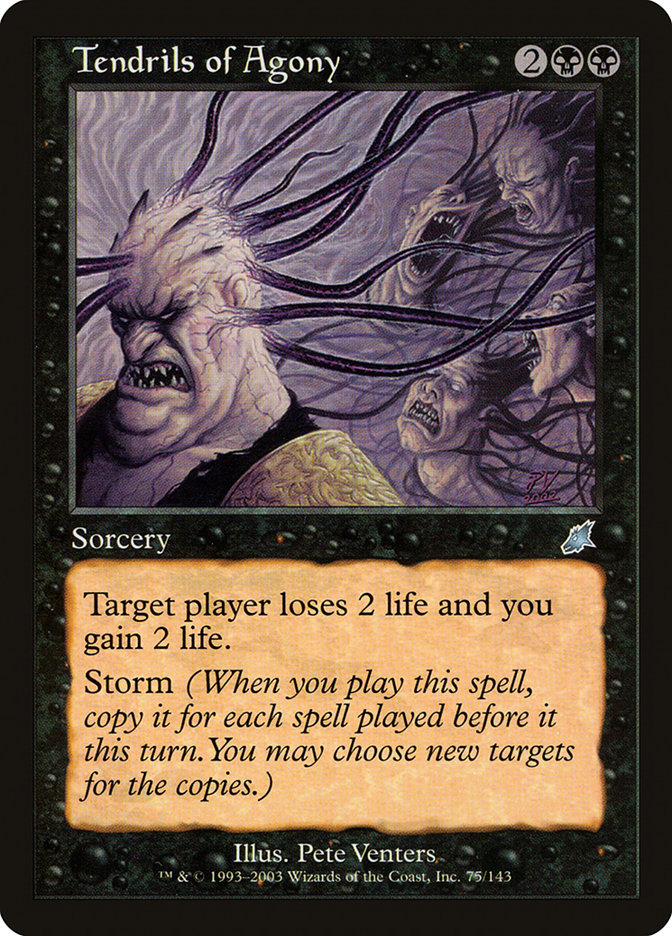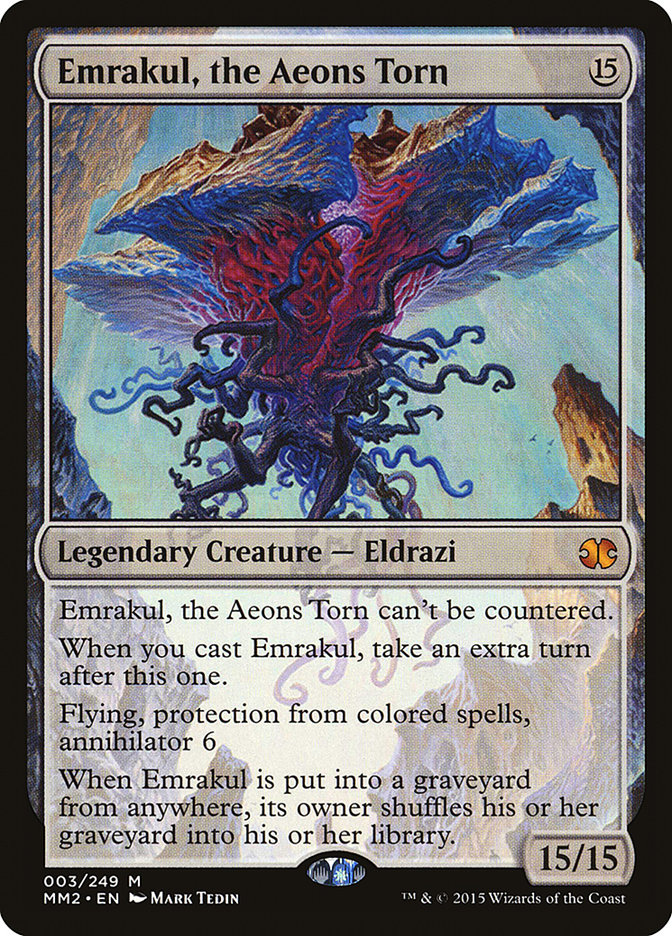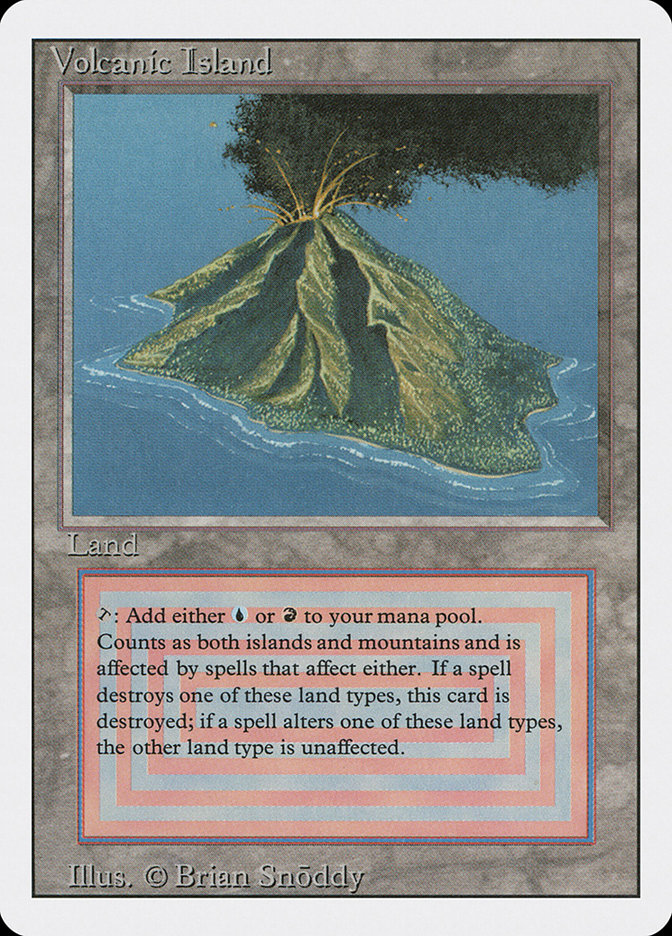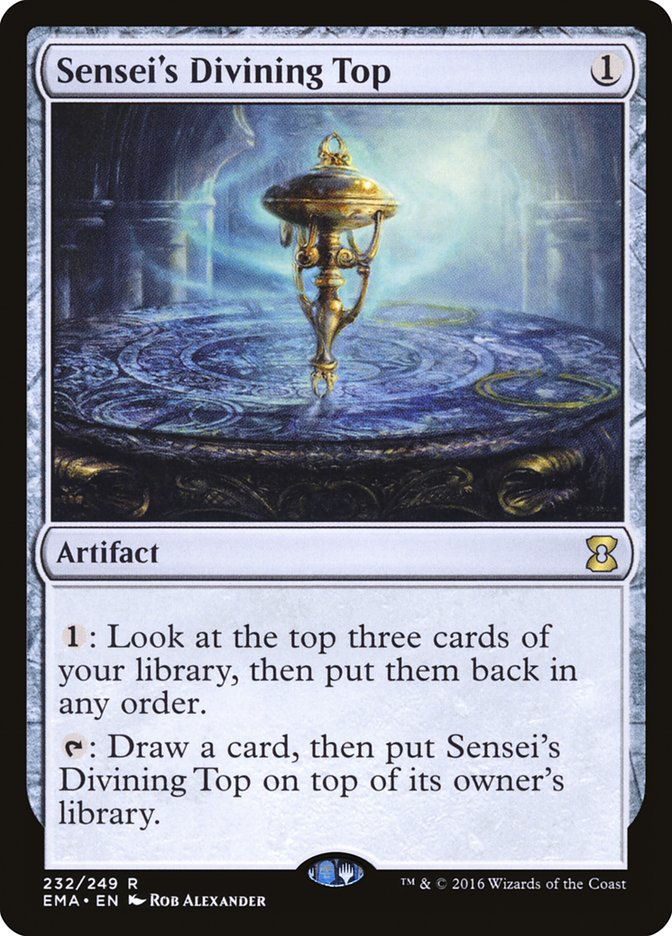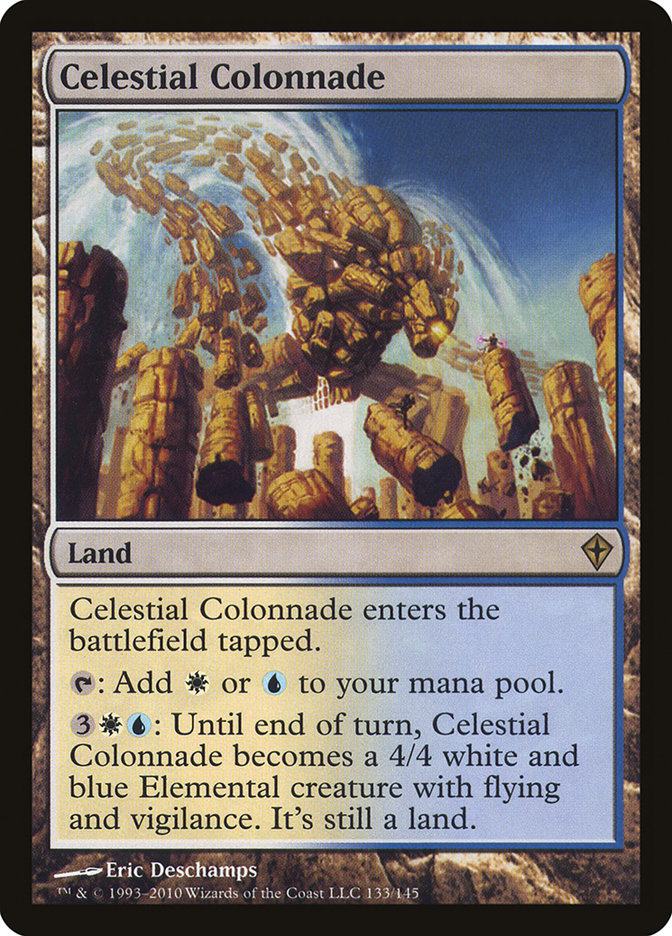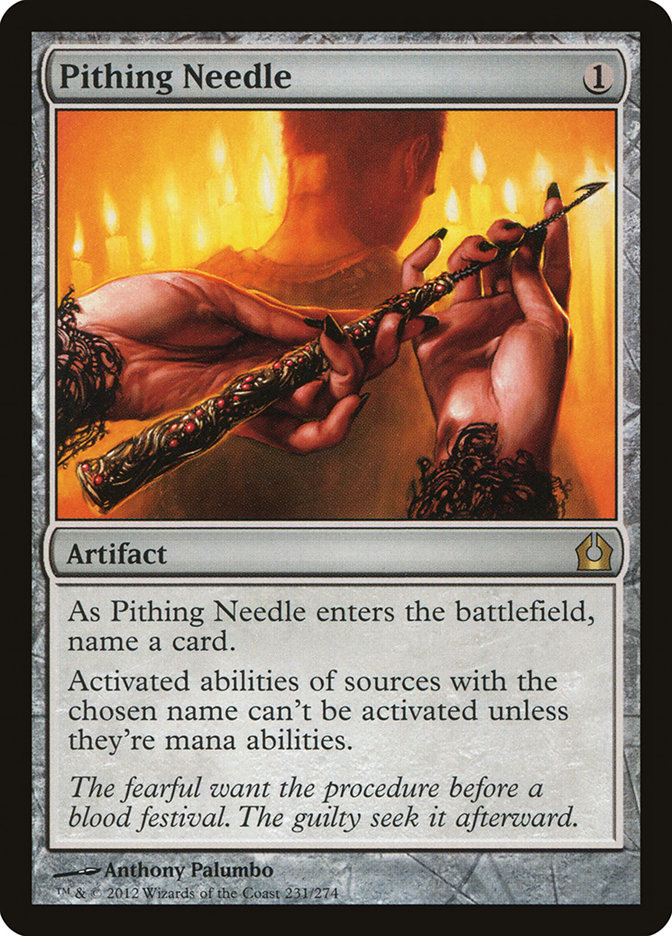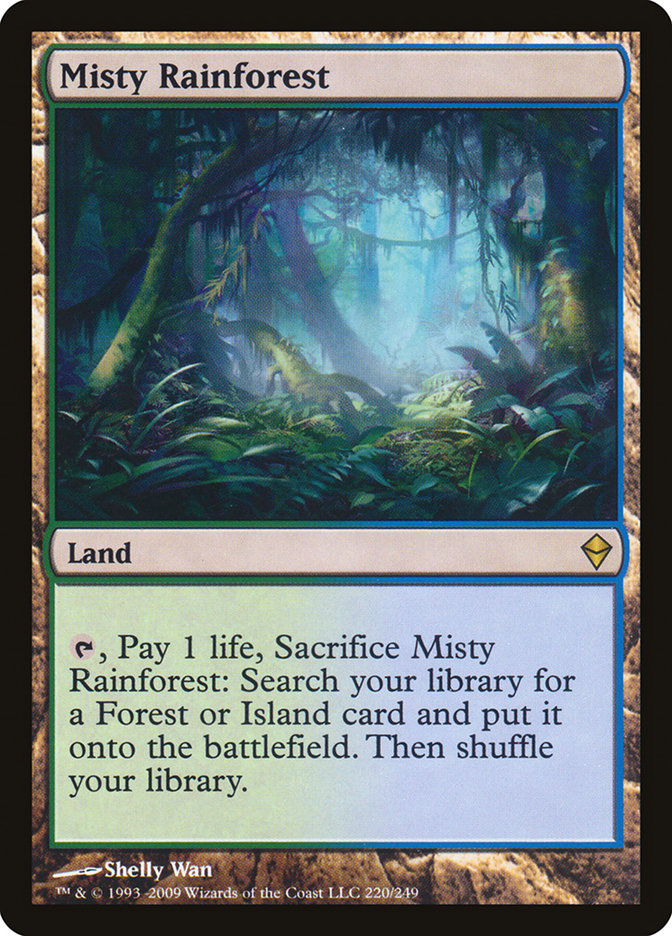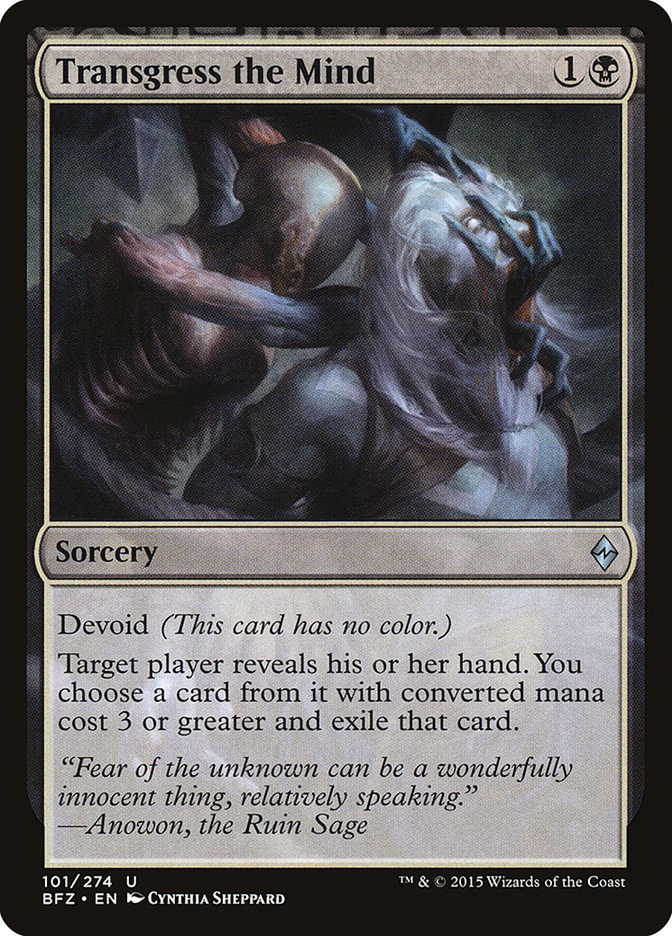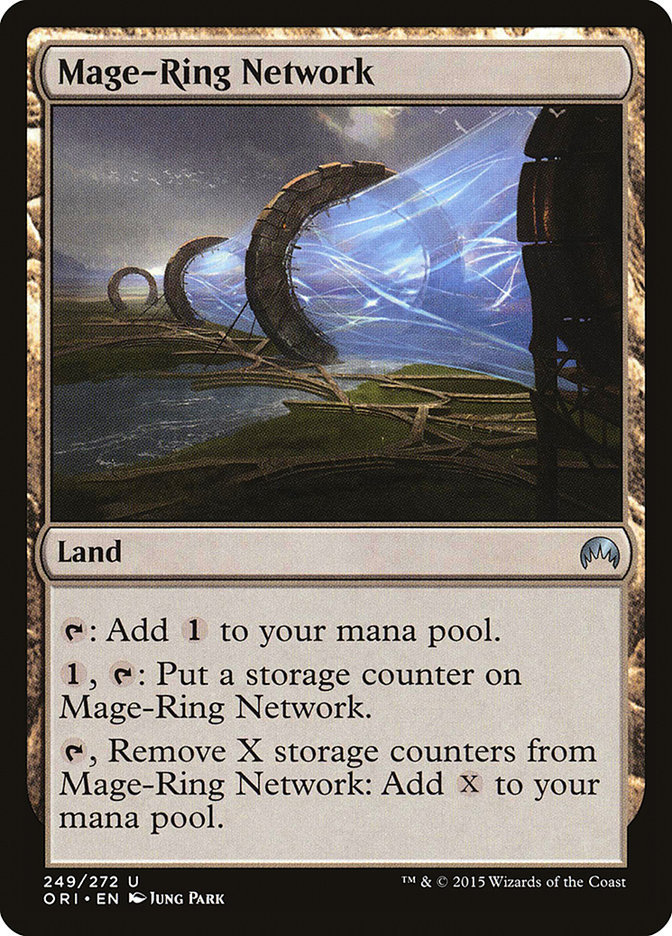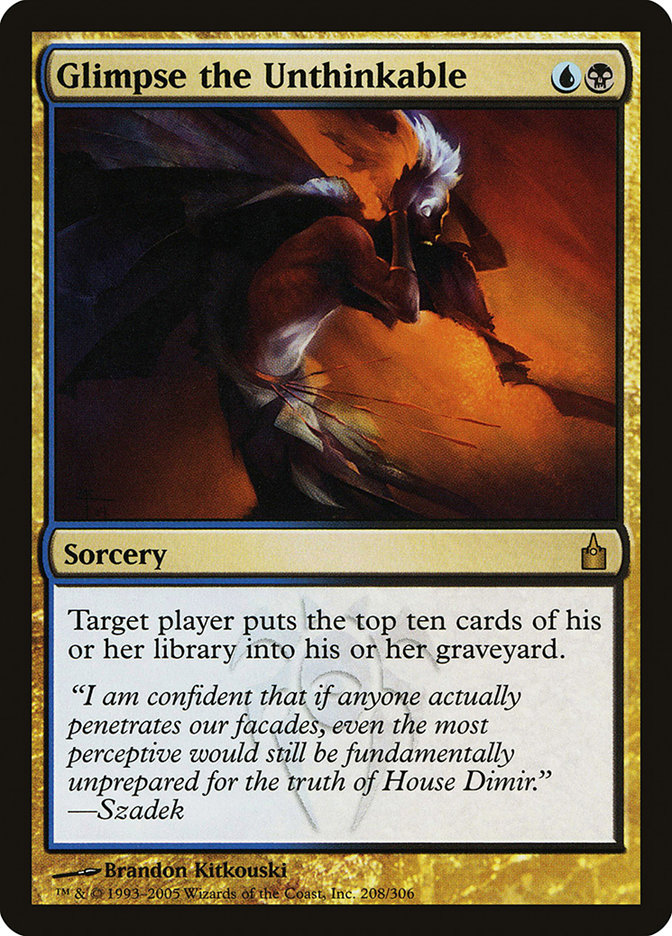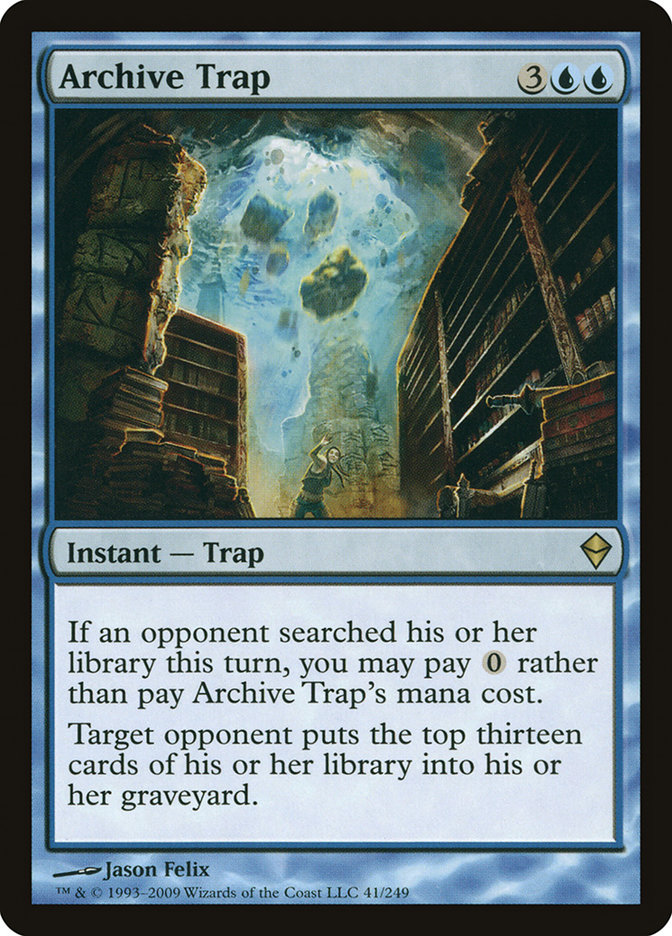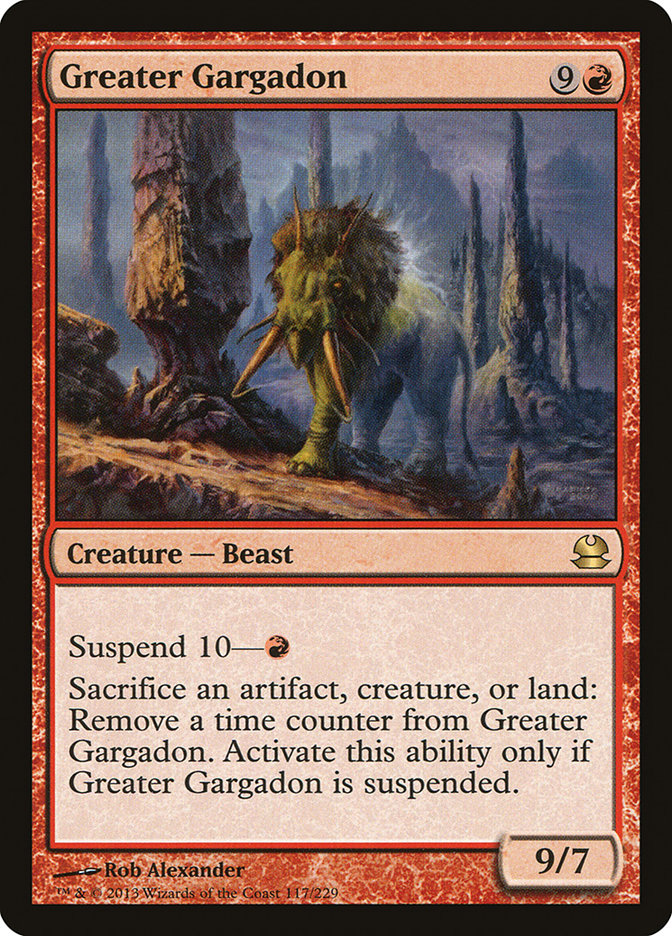As I said in my Eternal Masters article last week, Legacy is my favorite Constructed format.
Vintage is great, but it can be so draw-dependent—no one’s beating that turn 1 Black Lotus into Ancestral Recall and Time Walk. Standard and Modern can both go through cycles where only one kind of deck will dominate. In Legacy, you can try to win on turn 1 or turn 20. You can beat down with an army of tokens, get in for fifteen with Emrakul, or kill with a lethal copy of Tendrils of Agony. Legacy is Magic at its most diverse and exciting.
Despite Eternal Masters making the format more accessible than it’s been in years, I haven’t heard as much excitement over new players trying to get into Legacy as I would have expected. Why is that? The fact that you don’t need to play Legacy if you want to be a professional Magic player is probably part of the equation—Pro Tour and SCG Tour® Players need to focus on Draft, Sealed, Standard, and Modern.
For those of us who don’t have professional aspirations, however, the biggest barrier of entry is still the price of a Tier 1 deck. It can be frustrating to look at the $349.99 price tag next to Volcanic Island and picture just how much of a hassle it will be to get all those stupid Reserved List cards. And I certainly can’t sugarcoat that—the Reserved List sucks, and for some people Legacy will always seem just out of reach.
We can argue ourselves in circles about whether WotC is doing all they can to make Legacy accessible, whether their reprint policy is too conservative, and whether or not they should just start a new format where the Reserved List isn’t a thing. You can find my thoughts on these topics in my article on the future of reprints from last month. Instead of continuing to talk about what WotC should do, however, I’d like to spend this week discussing how to get into Legacy as it exists right now. Because honestly, it’s not as frustrating a financial decision as you might think.
So let’s power past the sticker shock on Volcanic Island, dig deeper than our general gripes about the Reserved List, and actually talk about what it takes to buy into Magic’s best format. Do you need to drop a thousand dollars all at once in order to play Legacy? Should you just buy sets of the staples that have been recently reprinted? Has Eternal Masters really changed my approach to Legacy? Let’s find out.
An Appeal to the Middle Class Magician
Here’s a dirty secret: I don’t like spoiler season for reprint sets. It stresses me out. I hate it when a card I have three or four copies of is reprinted. Not only have I lost money, but something I own isn’t quite as special as it used to be.
This is not a feeling I share very often, because it seems sort of mean and elitist. I only own these expensive cards in the first place because I was actively trading for them five, ten, fifteen years ago. This is just a card game, after all. Aren’t we all better off if everyone can play it the way they want to?
The “it’s just a card game” argument comes up a lot whenever people express frustration that an expensive card they own was just reprinted. I’ve never really questioned it because I figured it was just the have-nots telling Magic’s one percenters to stop whining.
Here’s the thing, though. Back when my wife and I had good jobs in the television industry and a decent amount of disposable income, I didn’t much care which of my cards was reprinted. Now that I’m in graduate school and writing full time, though, the value tied up in my Magic decks seems to matter a whole lot more. Reprint season has become a lot more stressful since then.
See, reprints don’t hurt the people on the very bottom—they’re never going to own enough expensive cards for it to matter. They also don’t hurt the people on the very top—to them, a card going from $50 to $10 overnight is immaterial and it really is “just a card game” to them. The people who feel the most pain when it comes to reprints are Magic’s middle class—the people for whom Legacy is a significant (but not insurmountable) investment.
Why is this an important prelude to our conversation about Legacy? Because these middle-class Magicians are the people who should be giving Legacy a real shot, though few of them do. Many of these players bounce around from Standard collection to Modern deck to random assortment of Commander cards without ever really honing their collection into a single Tier 1 Eternal deck. For many of them, Legacy just feels too unobtainable to even try. But is it? Or are we thinking about things the wrong way?
Legacy as an “Investment”
Like any collectible, Magic is an inherently risky investment. You shouldn’t cash in your 401k or count on your stack of dual lands to act as part of your retirement plan. At the end of the day, the “it’s just a card game” crowd is partially correct.
On the other hand, Magic has been going strong since 1993. And while Legacy doesn’t quite have the market share that it did before Modern came along, I can’t see it disappearing anytime soon. The metagame has been fairly stable for quite a while, too—while some decks and strategies ebb and flow, a Legacy deck from five or eight years ago would make a great starting point for a deck today. There is a continuity of value in Legacy that Modern has yet to display.
The reason that most Legacy cards are worth so much is that they’ve been good for a very, very long time. Sensei’s Divining Top has been awesome since the moment it was printed. Ditto Snapcaster Mage, Tundra, Daze, and Tarmogoyf. You can buy any of these cards and be reasonably certain that they will be good a month from now, a year from now, five years from now…heck, probably even a decade down the line. WotC can do a lot to change Magic over the next ten years, but Counterspell has been a good card for more than twice that long already.
This way of thinking may seem obvious, but it’s something that players rarely consider a picture this big when they actually sit down to think about the difference between buying a Kalitas, Traitor of Ghet versus a Celestial Colonnade. With Kalitas, you’re buying Standard legality until Spring of 2017 plus an unknown future after that. With Celestial Colonnade, you’re buying Modern and Legacy playability until the format changes considerably or a better card is printed.
So while I don’t think you should invest in Magic cards the way you might invest in stocks or bonds, “investing” in Legacy—buying cards that are likely to be good for a very, very long time—is a great way to keep the value of your collection constant over the long haul.
But how do you know what to target and when? Very few middle-class Magicians can go out and buy a Legacy deck all at once. For a long time, the best solution was probably just to try to get whatever you could whenever you could afford to—it’s not like Legacy prices were actually dropping, after all. But while Legacy is still one of the most stable formats in Magic, things have changed over the past few years. Some staples have stagnated or dropped in price, and reprint sets like Modern Masters and Eternal Masters mean that your deck is no longer guaranteed to rise in value simply by getting older. Buying Legacy cards is no longer a relatively risk-free proposition.
That doesn’t make Legacy a bad format to invest in—it just means you have to get a little bit tricky. Here’s my current step-by-step approach toward buying a Legacy deck:
Step One: Identify the Deck You Want To Build
There are lots of places to find Legacy decklists. The StarCityGames decklist database—which you have full access to search with your premium membership—is a great resource. The MTG Goldfish metagame breakdown is another.
Focus on a deck that has pedigree—something that’s been around for a while and is likely to keep sticking around. Of the top tier, I like Miracles, Shardless Sultai, Delver (any variant), Sneak and Show, Storm, Infect, Burn, and Elves. Pick something you know that you will like playing. Borrow a copy and test it out beforehand if you can.
If you have a Modern collection or some really nice Commander decks, take an inventory of Legacy staples you already own before you start. If you already have two Tarmogoyfs or a playset of Counterbalance, it might tip you in the right direction.
Step Two: Break the List into Tiered Categories
Now that significant reprints are (I assume) coming every year or two, you need to start thinking about card acquisition like a cycle that can be exploited by a savvy enough mage.
For example, here’s how I’d break down all the cards in Shardless Sultai:
#1 – Cards That Are Currently In Print
All of these cards are in Eternal Masters, which means that in a few days people will be actively opening them in booster packs. This is the bottom of the cycle—these cards might rise or fall a bit over the next few months, but they should be fairly stable and easier to find in the cast at your local shop or in a binder at FNM thanks to Eternal Masters.
There’s no hurry to acquire these cards—they are unlikely to see major gains over the next year or two thanks to the increased supply. Keep them on your radar, though, and acquire them when the price is right. Now is a great time to start this process because more than a handful of people at your LGS will be opening cards on this list and won’t know what to do with them.
#2 – Cards That Were Reprinted Recently
Having been reprinted over the past year or two, these cards are a little further into their life cycle. They aren’t likely to be reprinted again soon unless Tarmogoyf shows up in three straight Modern Masters sets—and I expect he’ll be taking a break.
These cards should be your top priority. Demand is likely to increase before supply, so there isn’t much risk of losing money due to an imminent reprint. These cards aren’t likely to see major buyouts or price spikes because they aren’t quite old enough, but they should see slow and steady gains.
#3 – Cards That Haven’t Been Printed in a While
· Grafdigger’s Cage
· Umezawa’s Jitte
Liliana’s RPTQ promo aside, none of these cards have been printed since at least Return to Ravnica. This means that they’re at risk for a buyout or price spike. It also means that they could be reprinted at any time.
Not all the cards on this list are created equal, of course. Garruk Relentless is very difficult to reprint thanks to the lore and the fact that it’s a double-faced planeswalker. Umezawa’s Jitte is probably never coming back in a set that will see even the smallest amount of Limited play. There’s a lot of price variance on this list, too—Pithing Needle currently costs less than three bucks while Misty Rainforest is $80.
Of all the tiered categories, this one is the most difficult. Buy in soon and you risk losing money thanks to a reprint. Hold off and you risk facing a price spike or a buyout. This is the no-win tier, and there’s nothing you can do but hold your nose and accept the fact that you will be losing money on some of these cards.
Granted, some of them will probably dodge a reprint for a bizarrely long time (Damnation, anyone?) but I’d bet that most of the cards on this list will show up in one form or another at some point in the next three years. If Misty Rainforest is reprinted in a Standard-legal set, it’ll drop to $20. Liliana of the Veil will probably end up in Modern Masters 2017.
Does this mean that buying into Shardless Sultai is a bad idea? Not at all—every Magic purchase comes with this sort of risk. The good news is that Eternal Masters has shown us how careful WotC is being about the secondary market for most of these cards—it’s not like Force of Will and Wasteland have actually dropped in price all that much.
Understanding where the risk factors lie will allow you to make the best decisions possible, too. Want to avoid losing money? Make tiered lists of all the Legacy decks you’re considering and start building the one with the fewest cards on this tier.
#4 – Cards on the Reserved List
· Bayou
Do you remember that old game show, Weakest Link? Players would be asked trivia questions by the host, a sassy British woman named Anne Robinson. If you got the answer wrong, your whole team would lose all the money they’d earned up to that point. The twist was that players could “bank” their money at certain points, preventing all their hard-earned cash from being wiped out thanks to a wrong answer.
For all the problems that the Reserved List has—and believe me, if I could have stopped it from being created, I would have—it’s a very effective “bank” for large swaths of a Legacy collection. Since most Shardless Sultai decks run between six and eight duals, you’re looking at an investment of about $1,500.
This is the one silver lining that the Reserved List has. If it didn’t exist, I couldn’t recommend that any middle-class mages actually spend that much money on two playsets of cards. Since it does, it’s actually fairly safe to buy these. They might go down a little depending on the cycles of popularity in Legacy and Vintage, but it’s not unreasonable to think that you can play with your dual lands for as long as you want and get out of them for a comparable price several years down the line.
Step Three: Identify Cards That Have Budget Replacements
Unfortunately, the best cards in Legacy don’t have budget replacements. You aren’t going to find anything that does a very good Jace, the Mind Sculptor or Force of Will impression. Here are a few good cheats I’ve found, though:
1) Shocklands are great budget dual lands. They certainly hurt your game enough against aggro and burn that you’ll want to get actual duals at some point, but some combination of shocklands and additional basics should allow you to compete in local Legacy events without having to buy a single Reserved List land.
2) The first dual land is by far the most important. If you’re running four copies of Scalding Tarn and one Volcanic Island, that effectively gives you five Volcanic Islands in your deck—more if you’re running off-color fetches. If you have four Scalding Tarns and two Volcanic Islands, you’ve just gone from five to six—not that big a jump. Your first dual land should be a top priority, but the others can be acquired much later.
3) Many decks pair off-color fetchlands with their duals—for example, Verdant Catacombs in a U/G deck to go get Tropical Island. But you know what works just as well? The significantly cheaper Windswept Heath. Take a long look at your fetchlands and tweak based on what you already have and what you can afford.
4) The other easiest place to find budget options? Discard and removal. Duress can stand in for Thoughtseize until you get those, and there are lots of solid removal spells that aren’t as pricey as Abrupt Decay.
5) Don’t forget to mine the rest of your collection—including replacements that aren’t exactly “budget.” Inquisition of Kozilek might be more expensive than Thoughtseize, but if you already have the Inquisitions, then it becomes the difference between a card you already own versus a card you have to buy.
Even with all of this, getting into Legacy will be difficult. The decks are more expensive than you’ll want them to be, and there won’t be quite as many tournaments as you’d like.
From a financial perspective, though, getting into Legacy one of the better decisions you could make. Look: you’re not going to stop playing Magic, right? Well, Magic is expensive no matter what format you play. If you’re the kind of person who loves powerful spells, you like the idea of building a deck you can master over a series of months, and you want your collection to hold its value, consider giving Legacy a shot. And think about buying a $350 Volcanic Island instead of a $350 box of Eternal Masters—might as well have the Reserved List work in your favor just once, right?
This Week’s Trends
Going into this summer, my biggest question was whether or not we’d see the same sort of summer lull that seems to hit Magic every June. On one hand, the social markers haven’t changed—kids are still out of school, and everyone is going to the beach or going camping instead of crowding into game stores for FNM. On the other, I figured that part of the drop was due to frustration over a format that hadn’t had a set rotation in almost a year. Would adding a second set rotation every spring make more people interested in playing Magic over the summer?
Based on the current Standard market, the new rotation schedule doesn’t seem to be helping all that much. Now that the format is fairly stable, prices are falling across the board. Other than a couple of uncommons (Transgress the Mind, Mage-Ring Network), every card in Standard is either stable or dropping at the moment. If previous seasonal trends hold true, prices will keep falling until late August. If you’re not planning to play Standard much this summer, I’d suggest buylisting your extra cards sooner rather than later.
Some of the better Modern and Legacy cards not in Eternal Masters have begun to rise in price, however. Horizon Canopy, Verdant Catacombs, Cavern of Souls, Counterbalance, Boom // Bust, Celestial Colonnade, Vengevine, Breeding Pool, Rugged Prairie, Orzhov Pontiff, Grafdigger’s Cage, and Thalia, Guardian of Thraben are all up this week.
Glimpse the Unthinkable and Archive Trap are continuing to increase in price as well, mostly thanks to the increasing popularity of U/B and Esper Mill in Modern. If this deck continues to draw people in (and not just the sorts of people who like playing Mill in all formats, regardless of how good it is), we could see small spikes for Hedron Crab, Visions of Beyond, and Mind Funeral. Shelldock Isle and Mesmeric Orb already went up in price thanks to this deck, so it seems likely that the rest of the key cards could see an increase in demand before long.
Greater Gargadon also spiked last week, and it’s currently sold out at $3.99. It has some utility in a Modern Dredge variant, but the spike seems to be mostly buyout-driven and the card is already falling off online. I’d sell into the hype here.
Realms Uncharted was a big winner last week as well—StarCityGames is sold out at $2.99. Believe it or not, the demand on this one feels real to me—people love their The Gitrog Monster Commander decks, and Realms Uncharted is great there. Expect this one to stabilize closer to $4 or $5 unless someone starts a silly buyout.


